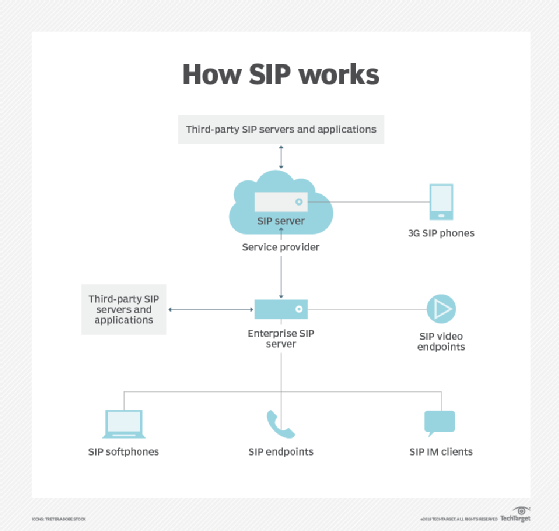
BillionPhotos.com - stock.adobe.
Go back to the basics with a glossary of VoIP terms
This mini glossary defines essential vocabulary associated with VoIP. Read through these VoIP terms to refresh your knowledge of IP-based telephony.
The ability to pick up a phone and talk to someone on the other end is essential to any organization. In the land of unified communications, voice over IP is how many telephony interactions happen.
VoIP is a collection of methods by which voice information is captured and changed into data packets, which are sent to an endpoint using an IP network. When the packets arrive at their destination, they are reassembled and translated back into audio. Using IP networks to transmit and receive voice data eliminates the need for costly network infrastructure by enabling voice and data to operate on the same network.
This glossary covers many of the VoIP terms and acronyms that are essential to understanding IP-based voice systems. Review these terms to brush up on your telephony knowledge and better understand your voice system.
VoIP terms
IP telephony. IP telephony stands for Internet Protocol telephony and is a system where voice information travels along packet-switched IP networks instead of traditional, dedicated, circuit-switched connections. Voice, fax and video information travel as packets of data through packet-switched connections that skip the tolls of traditional phone lines. VoIP is considered to be the standardized version of IP telephony, and the two terms are used interchangeably.
IP PBX. Internet Protocol private branch exchange is a telephone switching system within an enterprise for VoIP calls. An IP PBX can switch between VoIP lines and traditional phone lines or even between two traditional telephone users. Unlike a conventional PBX, an IP PBX eliminates the need for separate voice and data networks.
PSTN. PSTN stands for public switched telephone network and is sometimes referred to as plain old telephone service, or POTS. The PSTN is the collection of circuit-switching telephone networks, which are now nearly all digital. The PSTN supplies much of the long-distance infrastructure for VoIP.
Network packet. A packet consists of communications data that is broken down before being routed across packet-switched networks. Packet size ranges from 1.5 KB to 64 KB to prevent single large files from being sent.
Network packets are numbered and can take different routes to their final destination, even if they are from the same original file. When the packets reach their destination, they reassemble and convert back into their original file. The parts of a network packet include the header, payload and trailer, which contain all of the information needed to send and receive, as well as the data being sent.
G.711. G.711 is the International Telecommunication Union standard voice codec and digitizes analog voice signals at an output of 64 Kbps. G.711 uses the mu-Law codec for calls in North America and Japan and the A-Law codec for calls in the rest of the world. The codec uses packet loss concealment technology to minimize the effect of dropped packets. Voice activation detection (VAD) reduces bandwidth signals during periods of silence.
G.729. The G.729 codec is similar to G.711 and is a standard for IP PBX vendors. However, it compresses analog voice signals at an output of 8 Kbps. The codec uses VAD to reduce bandwidth during periods without audio. G.729 also uses comfort noise generation to produce slight background noise to avoid user distraction caused by silence or pauses on a call.
SIP. Session Initiation Protocol is used to initiate and terminate voice, video and messaging communications among two or more endpoints on an IP network. SIP determines where endpoints are located, if those endpoints are available and the capabilities of each endpoint. SIP does not provide the actual means of communication between endpoints; it only facilitates the communications sessions.

SBC. Session border controllers provide a level of security by acting as a router and only allowing authorized sessions to connect between an enterprise and service carrier. SBCs monitor quality of service for sessions and can act as a firewall to apply its own QoS rules to identify traffic threats. SBCs can be deployed on both the carrier and enterprise side of connections.







